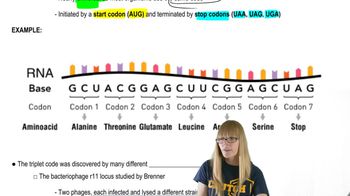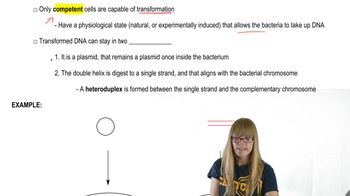Here are the essential concepts you must grasp in order to answer the question correctly.
Codons
Codons are sequences of three nucleotides in mRNA that correspond to specific amino acids during protein synthesis. Each codon is part of the genetic code, which dictates how sequences of nucleotides are translated into proteins. Understanding codons is essential for grasping how genetic information is expressed and how mutations can affect protein function.
Recommended video:
Experimental Evidence
Experimental evidence refers to the data and observations collected through scientific experiments that support or refute a hypothesis. In the context of genetics, early experiments, such as those by Marshall Nirenberg and Heinrich Matthaei, demonstrated how specific codons correspond to specific amino acids, providing foundational insights into the genetic code. This evidence is crucial for understanding the relationship between DNA, RNA, and protein synthesis.
Recommended video:
Transcription
Transcription is the process by which genetic information encoded in DNA is copied into messenger RNA (mRNA). This process is the first step in gene expression, allowing the information stored in DNA to be translated into proteins. Understanding transcription is vital for comprehending how genes are regulated and how their expression can be influenced by various factors.
Recommended video:




